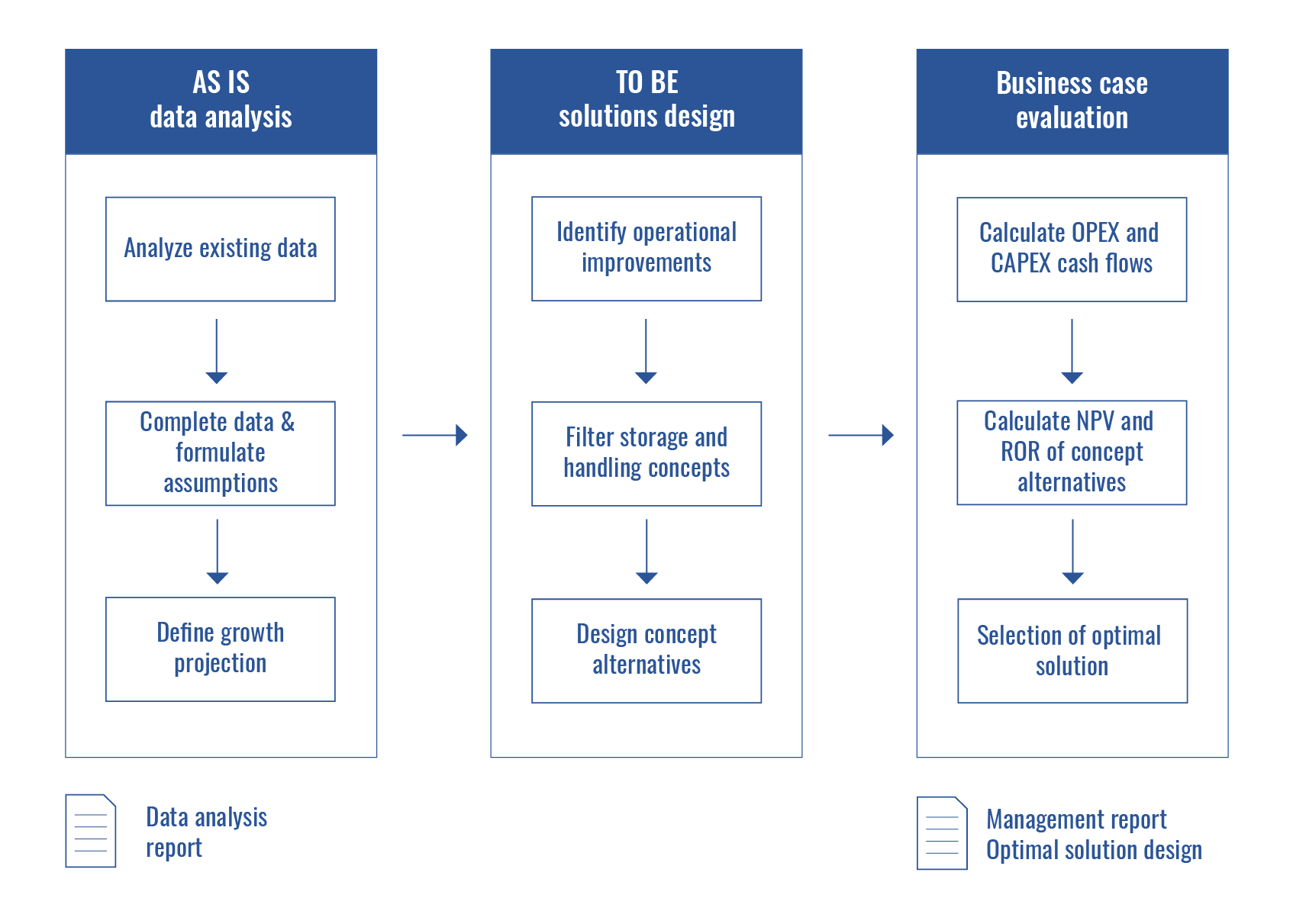The website www.vanlooygroup.com uses cookies to improve your user experience.
More info
About logistics feasibility studies

During a logistics feasibility study, one investigates which logistics concepts are capable of generating cost savings and/or higher storage and throughput capacities. A logistics feasibility study contains an economic and a technical point of view which are both intertwined and are to be processed iteratively. The figure above/below depicts the schematic overview of the logistics feasibility study as carried out at Van Looy Group.
The economic feasibility is investigated by quantifying all operational and capital expenditures of the current state (AS IS), by projecting these expenditures over an agreed time horizon and by comparing these with the expenditures of improved logistics concepts (TO BE). This results in a net present value (NPV) of potential savings and in the related return and payback period in case investments are involved.
The technical feasibility is investigated by fitting and honing the logistics concepts into the brown- or greenfield restrictions of the case. During this process, following parameters among others are taken into account: available surface, allowed building height, machine system capacities, reserved sprinkler heights, etc..
There are 2 important parameter categories in the business case or feasibility study:
on the one hand there are the operational productivities of the multiple logistics subprocesses and on the other hand there are the investment costs for handling or storage infrastructure (conveyor systems, AGVs, robots and cobots, ASRS equipment etc.). Van Looy Group relies on an extensive database of representative benchmark figures from various industries. In case the customer would not have any data or information on handling productivities, Van Looy Group will perform ‘time and motion’ measurements in order to quantify the productivities of the current state logistics processes and to apply them accordingly in the feasibility calculation.
For budgeting the investment costs of storage and handling infrastructure, Van Looy Group relies on an extended database of material handling and storage equipment. This database is fed and maintained with each project implementation of Van Looy Group.
An important sidenote for the feasibility study is that all lowhanging fruit, by form of logistics process improvements which do not require significant changes or any form of investment, is to be harvested before the start of the feasibility study.
It would not be realistic to allocate such small operational improvements to the future state improved logistics concept (TO BE).
Will these small operational improvements be neglected then? The answer is: no, these effects will be incorporated in an improved current state (called ‘AS IS*’) and this virtual baseline is then applied in any further business case calculation. This is way of working assures reliable business case results.